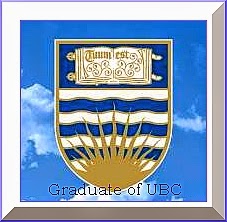Elementary School Arithmetic – Sad Modern trends
With progress of science and knowledge one would have
expected that standard of basic arithmetic of school children too would have
improved. However, surprisingly, this is one area where instead of improvement deterioration
appears to have taken place in recent decades. Several surveys carried out in
different parts of the world indicate that while children are becoming better
at electronic things like computers, their most basic arithmetic skills are
deteriorating. Even fourth or fifth graders are lagging behind in basic skills
such as addition, subtraction, multiplication and division of numbers.
A review of the scenario by this author seems to indicate that
a primary reason for this is the fact that curriculums have been expanded much
too rapidly with the consequence that far too much knowledge is being thrust
upon youngest of children leaving them disinterested in the subject.
Attempts have been made to include algebra at elementary school level as
well as concepts from so called modern mathematics that are wholly unnecessary
and confusing even for grown ups.
All these new additions to elementary school arithmetic look impressive to some parents. They are exciting and innovative for elementary school teachers and their school boards and make the job of teaching a rewarding, satisfying experience. However, somewhere in all this, children have been forgotten. The new changes are doing no good to children whereas it is they who must be the priority. Not only are these new innovative syllabi not doing any good to children, they are also compromising their futures and of the nations where such children live.
Just to quote one report, (http://globalnews.ca/news/1070386/parents-across-canada-fight-for-return-to-traditional-math-lessons/) - When it came to math, the average score of
the 21,000 15-year-old students tested, among 500,000 worldwide, showed a 14
per cent slip in the past nine years alone. This comes in top of the slip of
earlier decades. Grassroots movements in several progressive countries such as Canada believe
the problem is starting early, in elementary school, and are now lobbying their
provincial leaders to rethink how teachers are instructing math. Parent groups
in several provinces say it’s time for math teachers to go back to the basics
and say goodbye to so-called new math. A parent Tara Houle said,
“As an example they’re being given math Sudoku puzzles in Grade 4 in order to understand multiplication tables. They have computer games in the classroom where they shoot monsters in order to solve 3 x 4,”
It is not surprising that arithmetic skills of children are suffering in the modern world seeing that the same thing happened first to reading and writing skills when the TV came in and replaced reading story books as the favorite indoor past time of children. However, the simplest of reading and writing skills as well as basic arithmetic that permits a human to add, subtract, multiply and divide simple numbers without the aid of a device is part of the makeup of a civilized and educated human. It is a great tragedy if this has to be compromised. A completely fresh approach was therefore adopted as described in an
earlier note of this blog whereby the knowledge of numbers and arithmetic was imparted in
small increments so that by the age of ten a child would have a firm knowledge
of basic arithmetic. Rather than proposing anything new the proposed syllabus
is a return to a bygone era where children loved arithmetic and became
proficient at it in elementary schools. To carry the idea forward this author undertook a project of
developing the associated study material. The effort has resulted in a set of
five books for children between the ages of three and eight. These are.
- Preschool Arithmetic – For three to four year olds
- New Preschool Arithmetic – For four to five year olds
- First Arithmetic Book – For five to six year olds
- Second Arithmetic Book – For six to seven year olds
- Elementary School Arithmetic -For seven to eight year olds
If you click on the link for item 5, it will take you to Amazon where you can see inside some of the book online. These books are merely a first attempt at developing study
material on the proposed pattern. It is hoped that other teachers and educators
shall come forward to develop new better ones on similar lines and to complete
the set for children up to age nine. All of these listed books can be found in
print and electronic formats around the world. Just plug in the title in Amazon
or Google search. The last title is an active link and can be reached by
clicking on it.
NOTE:There is a Kindle version of elementary school arithmetic too but because the book contains tables and illustrations these do not come out quite the way they should and it is suggested that one should go for the print edition unless one merely wishes to make a quick and brief review of the contents sans formatting.
NOTE:There is a Kindle version of elementary school arithmetic too but because the book contains tables and illustrations these do not come out quite the way they should and it is suggested that one should go for the print edition unless one merely wishes to make a quick and brief review of the contents sans formatting.

.jpg)



Comments
an expert in this subject. Well along with your permission let me to take
hold of your feed to stay updated with imminent
post. Thanks 1,000,000 and please continue the rewarding work.
Here is my web site; pet sitters Johannesburg